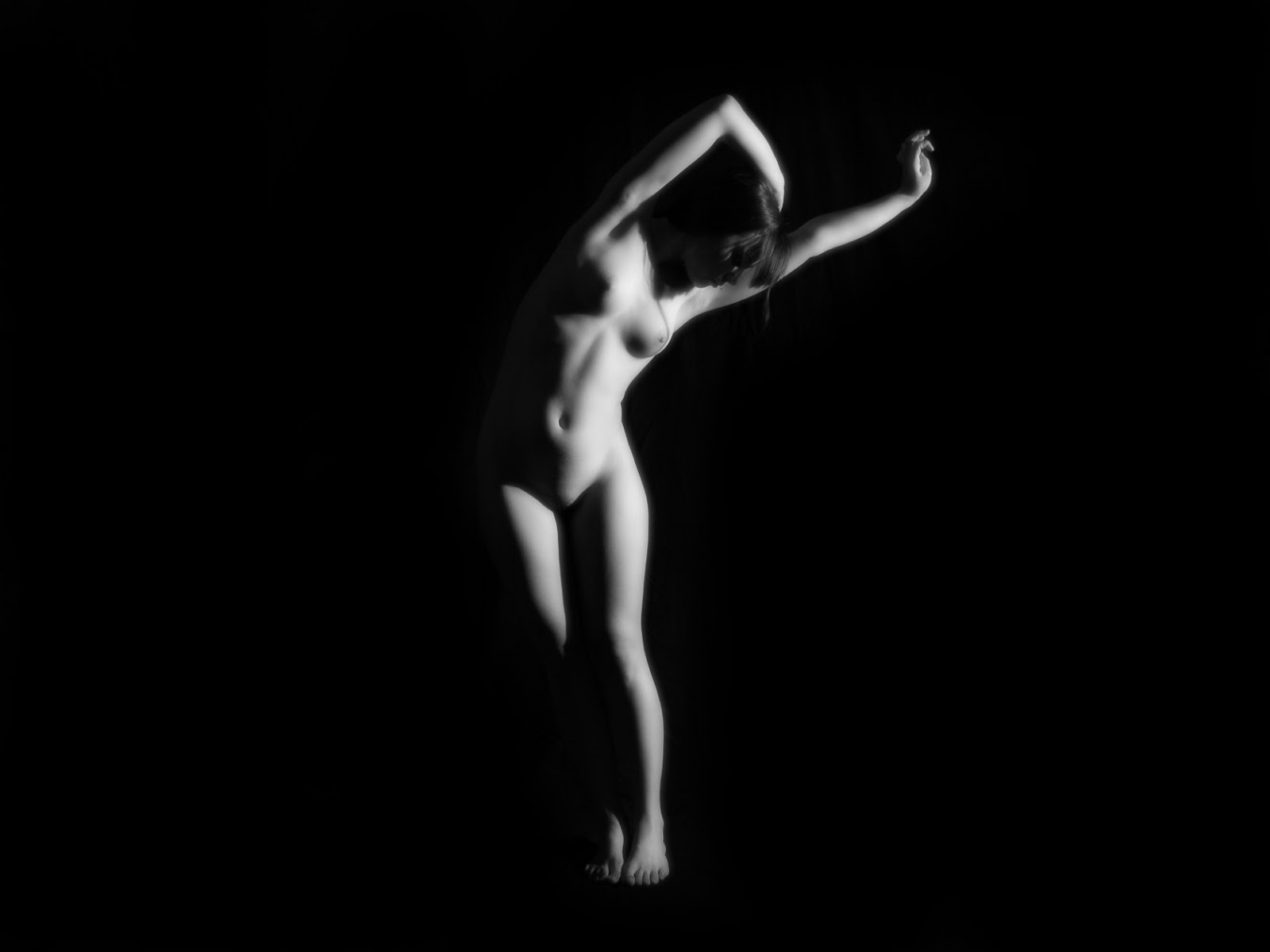Multiple Mediums: Photography vs. Painting
 As I've talked about before, the length of a pose is one of the most important factors in modeling. It's one of the things you think about most. How much time will your body twist around for, how long can you lean on that one arm: all these end up mattering a lot, not only to how comfortable you are, but to how you can stay still and return to a pose if need be. I was super-twitchy when I modeled last and kept changing the pose because it was so difficult to hold. I love short poses because I can do poses that are difficult to hold and it inspires me to be more dynamic. I save the static, subtle poses for when I have to hold them.
As I've talked about before, the length of a pose is one of the most important factors in modeling. It's one of the things you think about most. How much time will your body twist around for, how long can you lean on that one arm: all these end up mattering a lot, not only to how comfortable you are, but to how you can stay still and return to a pose if need be. I was super-twitchy when I modeled last and kept changing the pose because it was so difficult to hold. I love short poses because I can do poses that are difficult to hold and it inspires me to be more dynamic. I save the static, subtle poses for when I have to hold them.
This is part of the reason I love photography modeling. Granted, I've done much less of that kind of work because I want to be careful, and not end up in one of those facebook ads about how you can find a "willing girl" at www.thisisbullshit.com only if you click on the clearly photoshopped girl in a bikini. The great part is that each time I've worked with a photographer they have had a different style and a different way of working. It's interesting because, unlike so many drawing groups, when you're working for photographers they are artists trying to create serious work. Most of my traditional media gigs were drawing groups, where generally people got together to improve their skills, not create sellable work.
Another difference between modeling for photographers and for artists using more traditional media was the amount of direction. Instead of making up all my own poses and having people work from them I was given much more of an idea what I should be trying to portray, what was working and what wasn't. This was especially true with Kate, who I did my first photography work with. I had been working with her in drawing groups for months already, so we already had an idea of the others' style, and I especially loved that Kate had modeled in the past. It gave her an understanding of what was possible and what wasn't, so that she would push me, but not beyond my limits. Kate would explain what she was going for, I would try to interpret it, and she would correct me as needed. It was a really smooth back and forth, and I may have been at my most confident as a model during those photography sessions with Kate (even if they were just forty-minute sessions squeezed in the cracks of each of our busy lives).
After only a couple of these sessions I finally managed to get in touch with Carl Austin Hyatt, a really talented photographer who worked in the Button Factory studios in Portsmouth. He was fascinating to work for, but I'll talk more about that in my next post. The last of my New England photography modeling was done in Newburyport, MA with Gordon Przybyla (check out his other blogs for pictures from the Newburyport drawing group, which had a lot of great artists), a really fun series of less-than-thirty-second poses. My work with him summed up what I preferred about photography modeling compared to slower mediums. I was able to be more creative, more dynamic, overall more interesting. It seemed like the model was more a part of the process, since the level of interpretation that is the artist taking pen to paper was removed. The only problem with this feeling of control came with the use of digital...

